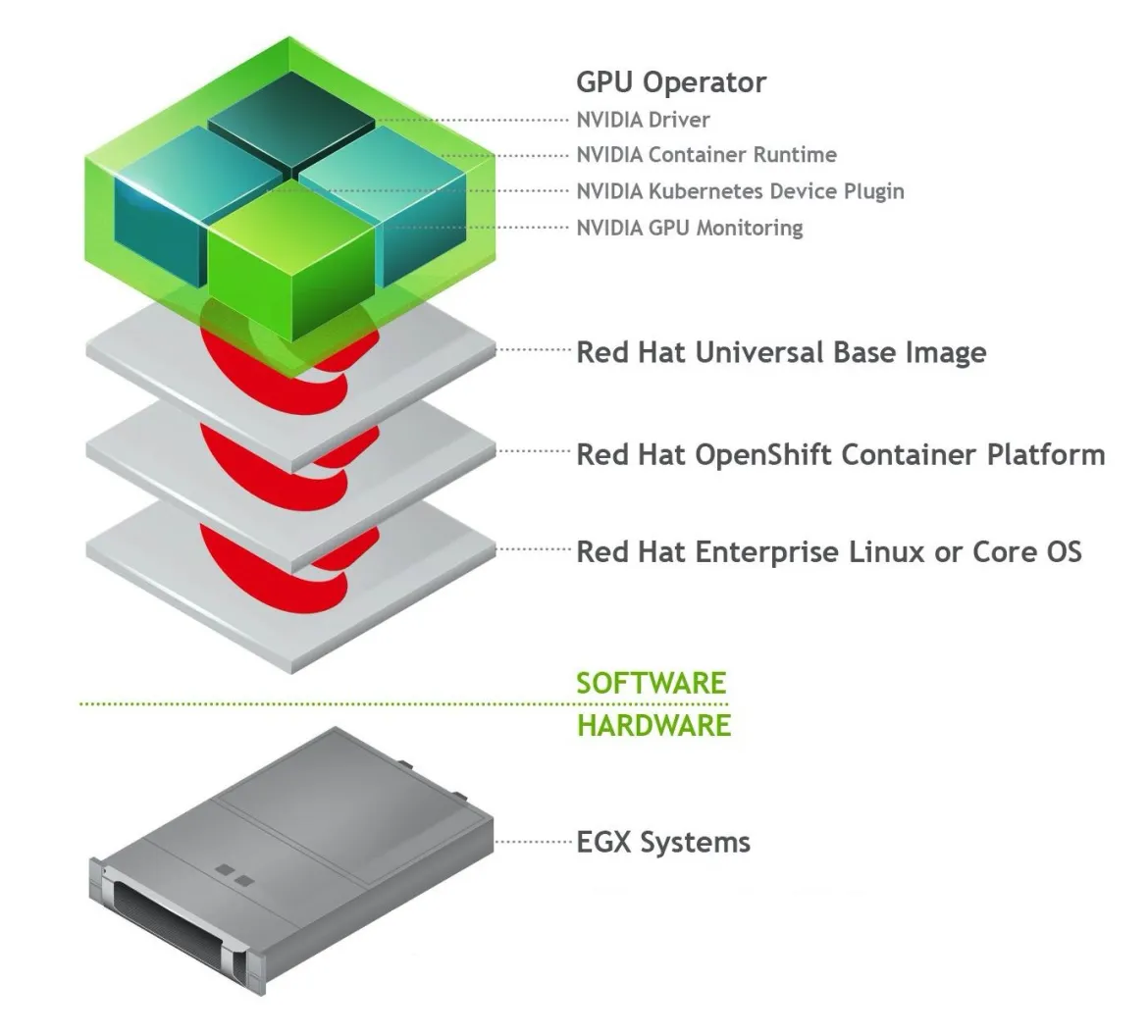Enterprises and telecommunication providers are looking at the edge as the newest IT footprint, observing the development of intelligent edge applications and monitoring the shift of workloads from traditional datacenters to the outer boundaries of public and private networks. The common realization is that bringing processing power and storage closer to the end user or data source is imperative to delivering high value services, scaling across geographically distributed locations and providing a faster, more satisfying service experience.
Despite edge being somewhat of an opposite to the cloud from a datacenter point of view, it is much closer to “home” if you are operating outside of traditional enterprise boundaries. Yet in the context of the open hybrid cloud, the concept of edge computing is fully embraced. A large number of physical devices operating at the edge look somewhat like a cloud, especially since they have to work and be managed in unison, even if each one of them is performing its own set of tasks.
Technological innovation at the edge is a critical component of Red Hat’s strategy. Intelligent cloud-native applications are transforming the enterprise edge in every industry and helping bring innovation into new markets. Some estimates put the number of edge devices to be 29 billion by 2022 and we, along with the rest of the IT industry, are preparing to deal with the associated complexities. We are working on simplifying at-scale deployments and the management of edge devices and collaborating with our partner ecosystem to take advantage of any enhanced processing capabilities needed to successfully manage computational demand.
Edge evolution through an open collaboration
One of our key AI platform partners, NVIDIA, has been developing innovative technologies and capabilities to be deployed at the edge. The NVIDIA EGX Edge AI platform has evolved to include systems varying from traditional servers, built by major OEMs, to supercompact microservers and edge IoT boxes. All of these solutions include powerful GPUs intended to accelerate the AI/ML and data processing, and are supported by various application frameworks, like NVIDIA Metropolis and NVIDIA Clara, creating an AI-enabled horizontal platform.

The recently announced NVIDIA A100 Tensor Core GPU, based on the NVIDIA Ampere architecture, aims to bring significant performance improvements and the ability to partition a physical GPU device into several discrete GPU instances. Multi-Instance GPU (MIG) technology can serve up to seven AI/ML or compute intensive workloads simultaneously on a single NVIDIA A100 GPU device, running anywhere from the cloud to the edge. We believe that for MIG to be truly transformational, support from the underlying hypervisor, operating system or container platform is required, which is where our collaboration with NVIDIA shines.
From simplified GPU driver packaging in Red Hat Enterprise Linux to testing MIG with vComputeServer on Red Hat Virtualization to certified GPU Operator support for Red Hat OpenShift, our engineering teams are collaborating on making sure that both software and hardware are running optimally across all deployment footprints. By simplifying deployment and management of the infrastructure we are helping our joint customers focus on addressing the demanding challenges presented by AI, edge and 5G workloads.
Enhancing networking at the edge with NVIDIA Mellanox technologies
With its recent acquisition of Mellanox, NVIDIA now brings significant expertise in networking and interconnect technologies, expanding the range of joint projects. One of the first examples is the introduction of the NVIDIA EGX A100 converged accelerator. This product enables edge servers to process and enhance protection for massive amounts of data like encrypted AI models or real-time streaming data from edge devices while providing direct network access to GPUs. Servers powered by the NVIDIA EGX A100 open up a new range of supported edge choices for our customers, and we are already working with NVIDIA on software support for this new category of accelerator devices.
That enablement effort is focused on creating a special resource Operator for the onboard NVIDIA Mellanox ConnectX-6 Dx SmartNIC and is aided by the availability of precompiled GPU driver packages and Red Hat OpenShift Certified Operator for NVIDIA GPUs. The net result of this work can help customers to simplify deployments and management of the new NVIDIA EGX A100 hardware in their infrastructure and accelerate adoption of new workloads, like low-latency signal processing required for 5G networks or decrypting high-resolution video streams at the line rate for AI processing at the edge.

Hybrid cloud deployment example of NVIDIA Metropolis processing multiple video streams using EGX platform at the edge with OpenShift running in the public cloud
Red Hat and NVIDIA recognize the need to deliver standardized, accessible infrastructure based on robust and scalable software stacks, and to make it easier for a wide range of developers to create AI-enabled applications. We are working together to enable the next wave of edge hardware innovations like NVIDIA EGX A100 and MIG across all of our platforms, from the operating system to virtualization to OpenShift.
At the same time, we are striving to enhance the user experience around datacenter technologies by enabling Red Hat software platforms on NVIDIA DGX systems and collaborating with our OEM partners, like Hewlett Packard Enterprise (HPE), to streamline the adoption of AI-enabled infrastructure. This can help our mutual customers more quickly design and deploy AI-based applications in production.
Learn more about our joint work for the hybrid cloud on "Accelerate AI with NVIDIA and Red Hat."
Sobre el autor
Yan Fisher is a Global evangelist at Red Hat where he extends his expertise in enterprise computing to emerging areas that Red Hat is exploring.
Fisher has a deep background in systems design and architecture. He has spent the past 20 years of his career working in the computer and telecommunication industries where he tackled as diverse areas as sales and operations to systems performance and benchmarking.
Having an eye for innovative approaches, Fisher is closely tracking partners' emerging technology strategies as well as customer perspectives on several nascent topics such as performance-sensitive workloads and accelerators, hardware innovation and alternative architectures, and, exascale and edge computing.
Navegar por canal
Automatización
Las últimas novedades en la automatización de la TI para los equipos, la tecnología y los entornos
Inteligencia artificial
Descubra las actualizaciones en las plataformas que permiten a los clientes ejecutar cargas de trabajo de inteligecia artificial en cualquier lugar
Nube híbrida abierta
Vea como construimos un futuro flexible con la nube híbrida
Seguridad
Vea las últimas novedades sobre cómo reducimos los riesgos en entornos y tecnologías
Edge computing
Conozca las actualizaciones en las plataformas que simplifican las operaciones en el edge
Infraestructura
Vea las últimas novedades sobre la plataforma Linux empresarial líder en el mundo
Aplicaciones
Conozca nuestras soluciones para abordar los desafíos más complejos de las aplicaciones
Programas originales
Vea historias divertidas de creadores y líderes en tecnología empresarial
Productos
- Red Hat Enterprise Linux
- Red Hat OpenShift
- Red Hat Ansible Automation Platform
- Servicios de nube
- Ver todos los productos
Herramientas
- Training y Certificación
- Mi cuenta
- Soporte al cliente
- Recursos para desarrolladores
- Busque un partner
- Red Hat Ecosystem Catalog
- Calculador de valor Red Hat
- Documentación
Realice pruebas, compras y ventas
Comunicarse
- Comuníquese con la oficina de ventas
- Comuníquese con el servicio al cliente
- Comuníquese con Red Hat Training
- Redes sociales
Acerca de Red Hat
Somos el proveedor líder a nivel mundial de soluciones empresariales de código abierto, incluyendo Linux, cloud, contenedores y Kubernetes. Ofrecemos soluciones reforzadas, las cuales permiten que las empresas trabajen en distintas plataformas y entornos con facilidad, desde el centro de datos principal hasta el extremo de la red.
Seleccionar idioma
Red Hat legal and privacy links
- Acerca de Red Hat
- Oportunidades de empleo
- Eventos
- Sedes
- Póngase en contacto con Red Hat
- Blog de Red Hat
- Diversidad, igualdad e inclusión
- Cool Stuff Store
- Red Hat Summit

